
SOUTHERN BELLY

SOUTHERN BELLY

Also by john T. Edge
A Gracious Plenty: Recipes and Recollections from the American South
Donuts: An American Passion
Hamburgers & Fries: An American Story
Fried Chicken: An American Story
Apple Pie: An American Story
Southern Belly
The **Ultimate** Food Lovers Companion to the South

John T. Edge
pen & ink illustrations by Blair Hobbs
Algonquin Books of Chapel Hill 2007
Published by
ALGONQUIN BOOKS OF CHAPEL HILL
Post Office Box 2225
Chapel Hill, North Carolina 27515-2225
a division of
WORKMAN PUBLISHING
225 Varick Street
New York, New York 10014
2007 by John T. Edge. All rights reserved. Revised and expanded edition,
Algonquin Books of Chapel Hill, June 2007.
Published in different form in hardcover by Hill Street Press in 2000.
Printed in the United States of America.
Published simultaneously in Canada by Thomas Allen & Son Limited.
Pen and ink illustrations by Blair Hobbs.
Design by Anne Richmond Boston.
Library of Congress Cataloging-in-Publication Data
Edge, John T.
Southern belly: the ultimate food lovers companion to the South / by John T. Edge;
pen & ink illustrations by Blair Hobbs.1st paperback ed.
p. cm.
Originally published: Athens, Ga.: Hill Street Press, 2000.
Includes index.
ISBN-13: 978-1-56512-547-6
1. Cookery, AmericanSouthern style. 2. RestaurantsSouthern States
Guidebooks. I. Title.
TX715.2.S68E3285 2007
641.5975dc22 2006032603
10 9 8 7 6 5 4 3 2 1
First Paperback Edition

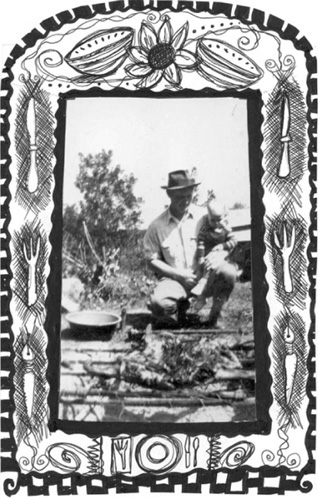
For my father, John Thomas Edge Sr., who taught me how to use knife, fork, and pen
Contents

Introduction

AN APPETITE FOR CONTEXT
The primary requisite for writing well about food is a good appetite. Without this, it is impossible to accumulate, within the allotted span, enough experience of eating to have anything worth setting down. A good appetite gives an eater room to turn around in.
A. J. Liebling
My appetite is faceted.
I crave honest food: fiddler catfish, rolled in spiced cornmeal and fried in a castiron skillet; pimento cheese made with hand-shredded sharp cheddar, chopped pimento peppers, homemade mayonnaise, and precious little else; dusky collard greens swimming in potlikker; whole-hog barbecue, pulled from a hickory-stoked pit, hacked into juicy bits, and doused with a thin sauce of vinegar and pepper; deviled eggs spiked with sweet pickle relish and dusted with paprika; red tomatoes eaten out of hand as their summer-ripe juices trace down my forearm.
What is more, I have an appetite for the lore that defines life in the South. When I sit down at table, I want to commune with cooks past and present. I want to know their life stories. I want to understand their struggles. In other words, Im as interested in the 1964 fight to integrate Ollies Barbecue in Birmingham, Alabama, and the life story of Greenville, South Carolina, mayonnaise maven Eugenia Duke, as I am in whether Deacon Burton of Atlanta, Georgia, fried his chicken in lard or shortening.
The third facet is more oblique. In the pages that follow, I seek, for the most part, to showcase restaurants and artisans that matter. Herein youll visit places where community is fostered. You will meet people whose time at the stove reinforces the tethers of civic life. Such roles comes with experience and so, by and large, the people you meet and the restaurants you visit will be veterans of the Southern scene. Two decades is the general measure I use for inclusion, but there are, of course, exceptions.
If I did my job well, this book will read like a social history of Southern food. Not a history of the conventional kind mind you, but a mosaic-like portrait of the South as told through its foods, a pastiche of people and places that sates both mind and belly. To my mind, much of what has been written about Southern food is quaint condescension, foisted upon the reading public by interlopers with a taste for good macaroni and cheese but no understanding of the cultural milieu we call the South. I aim to fix that, and point the way to some of the best eats that ever crossed your palate.
In large part, I write of commercial establishments and the people who run them. In an ideal scenario, you would travel the South, stopping off at this farmers kitchen to sample a wedge of cornbread shot through with crisp pork cracklins, or that fishermans hut for a stew of oysters and cream gilded with a skein of rich, sweet butter. Yes, Southerners are a hospitable people, but invitations to sup at a strangers home are few these days, so I have chosen to write of people and places that require no special access or knowledge save a good map. Let me be very clear: I dont rank the restaurants profiled herein, nor do I tell you what hours they are open. In other words, this is not just a guidebook. A guidebook would only tell you where to eat; Southern Belly aims to tell you a story and to serve up some great eats alongside.
This is a very subjective work, a proudly personal, admittedly skewed take on life beneath the Mason-Dixon divide. My South includes Alabama, Arkansas, Florida, Georgia, Kentucky, Louisiana, Mississippi, North Carolina, South Carolina, Tennessee, Texas, and Virginia.
In defining what constitutes the South, I ignored matters of Confederate or Union affiliation during the Civil War or mapping based on where kudzu grows, or where soft drinks are known generically as Coke versus pop, looking instead to whether a preponderance of the citizens staked a claim to being Southern. And so, based on recent travels through eastern Texas and northern Florida, I welcome those precincts to the fold. And, once again, the District of Columbia slipped in the back door. Raise a hue and cry if you like, but its my book. Heres hoping a perusal of these pages makes for good readingand good eating.
ALaBAMa

 kra three ways: fried, boiled, or stewed with tomatoes. A casserole of sunny, yellow squash enrobed in a caul of cheese. Red, ripe tomatoes, pearly ears of corn, collard, mustard, and turnip greens sold by the bushel at the Montgomery Curb Market. Thats what I like about Alabama. But, Lord, lets not forget oysters from Wintzells in Mobile or ribs from Tuscaloosas Dreamland or West Indies salad from Bayleys down in Theodore. Along the way, we meet Eugene Walter, the patron saint of Mobile, and Birminghams Ollie McClung, who in 1964 fought the Supreme Court to keep his barbecue restaurant segregated.
kra three ways: fried, boiled, or stewed with tomatoes. A casserole of sunny, yellow squash enrobed in a caul of cheese. Red, ripe tomatoes, pearly ears of corn, collard, mustard, and turnip greens sold by the bushel at the Montgomery Curb Market. Thats what I like about Alabama. But, Lord, lets not forget oysters from Wintzells in Mobile or ribs from Tuscaloosas Dreamland or West Indies salad from Bayleys down in Theodore. Along the way, we meet Eugene Walter, the patron saint of Mobile, and Birminghams Ollie McClung, who in 1964 fought the Supreme Court to keep his barbecue restaurant segregated.
Next page

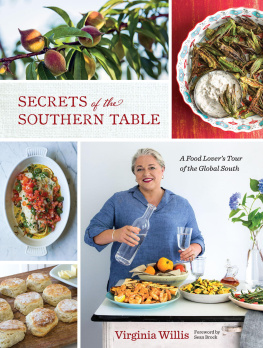
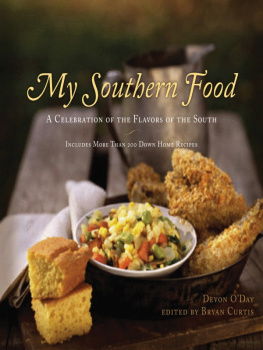
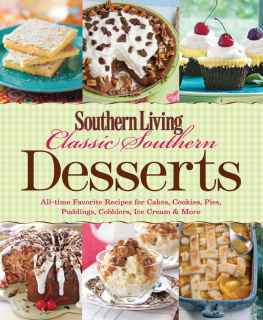

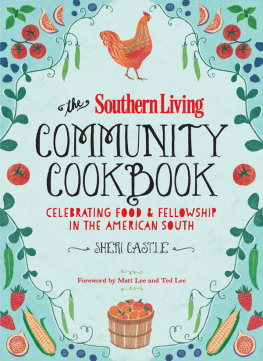
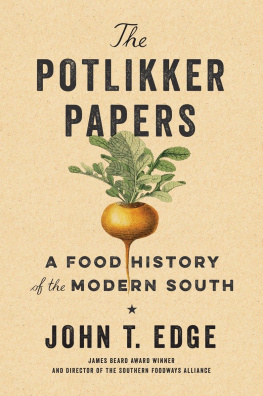
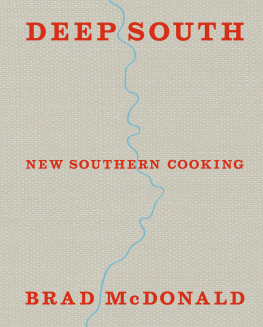








 kra three ways: fried, boiled, or stewed with tomatoes. A casserole of sunny, yellow squash enrobed in a caul of cheese. Red, ripe tomatoes, pearly ears of corn, collard, mustard, and turnip greens sold by the bushel at the Montgomery Curb Market. Thats what I like about Alabama. But, Lord, lets not forget oysters from Wintzells in Mobile or ribs from Tuscaloosas Dreamland or West Indies salad from Bayleys down in Theodore. Along the way, we meet Eugene Walter, the patron saint of Mobile, and Birminghams Ollie McClung, who in 1964 fought the Supreme Court to keep his barbecue restaurant segregated.
kra three ways: fried, boiled, or stewed with tomatoes. A casserole of sunny, yellow squash enrobed in a caul of cheese. Red, ripe tomatoes, pearly ears of corn, collard, mustard, and turnip greens sold by the bushel at the Montgomery Curb Market. Thats what I like about Alabama. But, Lord, lets not forget oysters from Wintzells in Mobile or ribs from Tuscaloosas Dreamland or West Indies salad from Bayleys down in Theodore. Along the way, we meet Eugene Walter, the patron saint of Mobile, and Birminghams Ollie McClung, who in 1964 fought the Supreme Court to keep his barbecue restaurant segregated.